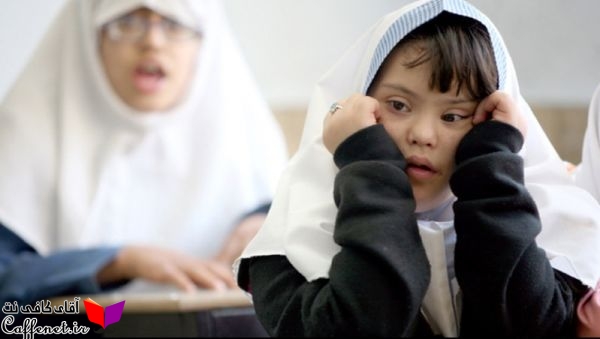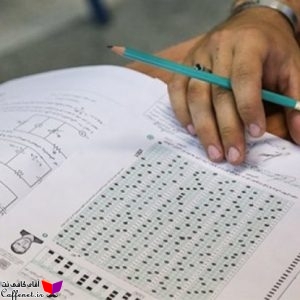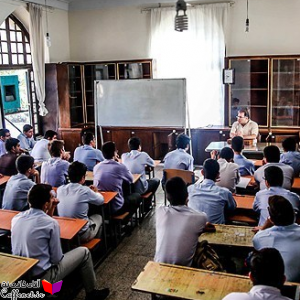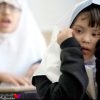ترجمه مقاله Special education
۵,۰۰۰ تومان
مقاله موجود است
ترجمه مقاله Special education یک مقاله انگلیسی است که ما بهمراه متن ترجمه دقیق و کامل آن را برای دانلود قرار دادیم. این مقاله با فرمت word کاملا قابل ویرایش آماده دانلود شده است.
در ادامه با آقای کافی نت همراه باشید تا قسمتی از متن انگلیسی را مشاهده بفرمایید. قابل ذکر است برای مشاهده متن ترجمه شده باید مقاله خریداری شود.
Special education
Special education is the education of students with special needs in a way that addresses the students’ individual differences and needs. Ideally, this process involves the individually planned and systematically monitored arrangement of teaching procedures, adapted equipment and materials, accessible settings, and other interventions designed to help learners with special needs achieve a higher level of personal self-sufficiency and success in school and community than would be available if the student were only given access to a typical classroom education.
ترجمه مقاله Special education
Common special needs include challenges with learning, communication challenges, emotional and behavioral disorders, physical disabilities, and developmental disorders. Students with these kinds of special needs are likely to benefit from additional educational services such as different approaches to teaching, use of technology, a specifically adapted teaching area, or resource room.
Intellectual giftedness is a difference in learning and can also benefit from specialized teaching techniques or different educational programs, but the term “special education” is generally used to specifically indicate instruction of students whose special needs reduce their ability to learn independently or in an ordinary classroom, and gifted education is handled separately.
In most developed countries, educators are modifying teaching methods and environments so that the maximum number of students are served in general education environments. Special education in developed countries is often regarded less as a “place” and more as “a range of services, available in every school.” Integration can reduce social stigmas and improve academic achievement for many students.
The opposite of special education is general education. General education is the standard curriculum presented with standard teaching methods and without additional supports.
Identifying students with special needs
Some children are easily identified as candidates for special needs from their medical history. They may have been diagnosed with a genetic condition that is associated with mental retardation, may have various forms of brain damage, may have a developmental disorder, may have visual or hearing disabilities, or other disabilities.
Among students whose identification is less obvious, such as students with learning difficulties, two primary methods have been used for identifying them: the discrepancy model and the response to intervention model. The discrepancy model depends on the teacher noticing that the students’ achievements are noticeably below what is expected. The response to intervention model advocates earlier intervention.
In the discrepancy model, a student receives special educational services for a specific learning difficulty (SLD) if and only if the student has at least normal intelligence and the student’s academic achievement is below what is expected of a student with his or her IQ. Although the discrepancy model has dominated the school system for many years, there has been substantial criticism of this approach (e.g., Aaron, 1995, Flanagan and Mascolo, 2005) among researchers.
One reason for criticism is that diagnosing SLDs on the basis of the discrepancy between achievement and IQ does not predict the effectiveness of treatment. Low academic achievers who also have low IQ appear to benefit from treatment just as much as low academic achievers who have normal or high intelligence.
The alternative approach, response to intervention, identifies children who are having difficulties in school in their first or second year after starting school. They then receive additional assistance such as participating in a reading remediation program. The response of the children to this intervention then determines whether they are designated as having a learning disability. Those few who still have trouble may then receive designation and further assistance. Sternberg (1999) has argued that early remediation can greatly reduce the number of children meeting diagnostic criteria for learning disabilities.
He has also suggested that the focus on learning disabilities and the provision of accommodations in school fails to acknowledge that people have a range of strengths and weaknesses and places undue emphasis on academics by insisting that people should be propped up in this arena and not in music or sports.
ترجمه مقاله Special education
Individual needs
A special education program should be customized to address each individual student’s unique needs. Special educators provide a continuum of services, in which students with special needs receive services in varying degrees based on their individual needs. Special education programs need to be individualized so that they address the unique combination of needs in a given student.[8]
In the United States, Canada, and the UK, educational professionals used the initialism IEP when referring to a student’s individualized education plan.
Students with special needs are assessed to determine their specific strengths and weaknesses.[8] Placement, resources, and goals are determined on the basis of the student’s needs. Accommodations and Modifications to the regular program may include changes in curriculum, supplementary aides or equipment, and the provision of specialized physical adaptations that allow students to participate in the educational environment to the fullest extent possible.[9] Students may need this help to access subject matter, to physically gain access to the school, or to meet their emotional needs.
For example, if the assessment determines that the student cannot write by hand because of a physical disability, then the school might provide a computer for typing assignments, or allow the student to answer questions orally instead. If the school determines that the student is severely distracted by the normal activities in a large, busy classroom, then the student might be placed in a smaller classroom such as a resource room.
ترجمه مقاله Special education
Methods of provision
Schools use different approaches to providing special education services to identified students. These can be broadly grouped into four categories, according to whether and how much contact the student with special needs has with non-disabled students (using North American terminology):
Inclusion: In this approach, students with special educational needs spend all, or at least more than half, of the school day with students who do not have special educational needs. Because inclusion can require substantial modification of the general curriculum, most schools use it only for selected students with mild to moderate special needs, for which is accepted as a best practice.[10][11] Specialized services may be provided inside or outside the regular classroom, depending on the type of service.
Students may occasionally leave the regular classroom to attend smaller, more intensive instructional sessions in a resource room, or to receive other related services that might require specialized equipment or might be disruptive to the rest of the class, such as speech and language therapy, occupational therapy, physical therapy, or might require greater privacy, such as counseling sessions with a social worker.[12]
Mainstreaming refers to the practice of educating students with special needs in classes with non-disabled students during specific time periods based on their skills. Students with special needs are segregated in separate classes exclusively for students with special needs for the rest of the school day.[13]
Segregation in a self-contained classroom or special school: In this model, students with special needs spend no time in classes with non-disabled students. Segregated students may attend the same school where regular classes are provided, but spend their time exclusively in a separate classroom for students with special needs.
If their special class is located in an ordinary school, they may be provided opportunities for social integration outside the classroom, e.g., by eating meals with non-disabled students.[14] Alternatively, these students may attend a special school.[13]
Exclusion: A student who does not receive instruction in any school is excluded from school. Historically, most students with special needs have been excluded from school,[15] and such exclusion may still occur where there is no legal mandate for special education services, such as in developing countries. It may also occur when a student is in hospital,[13] housebound,[13] or detained by the criminal justice system. These students may receive one-on-one instruction or group instruction. Students who have been suspended or expelled are not considered excluded in this sense.
ترجمه مقاله Special education
Instructional strategies
Different instructional techniques are used for some students with special educational needs. Instructional strategies are classified as being either accommodations or modifications.
An accommodation is a reasonable adjustment to teaching practices so that the student learns the same material, but in a format that is accessible to the student. Accommodations may be classified by whether they change the presentation, response, setting, or scheduling.[16] For example, the school may accommodate a student with visual impairments by providing a large-print textbook; this is a presentation accommodation.
A modification changes or adapts the material to make it simpler.[17] Modifications may change what is learned, how difficult the material is, what level of mastery the student is expected to achieve, whether and how the student is assessed, or any another aspect of the curriculum.
[18] For example, the school may modify a reading assignment for a student with reading difficulties by substituting a shorter, easier book. A student may receive both accommodations and modifications.
| تعداد صفحات | 1-10 |
|---|---|
| فایل PDF | ندارد |
| فایل Word | دارد |
-
۳۰,۰۰۰ تومان
۴۰,۰۰۰ تومانمقاله سیکل های ترمودینامیک
۳۰,۰۰۰ تومان۴۰,۰۰۰ تومان -
۲۴,۹۰۰ تومان
۶۰,۰۰۰ تومانبررسی تأثیر عوامل مختلف درموفقیت مدیریت کلاس
۲۴,۹۰۰ تومان۶۰,۰۰۰ تومان -
۲۵,۰۰۰ تومان
۴۵,۰۰۰ تومانجریان شناسی سیاسی در ایران
۲۵,۰۰۰ تومان۴۵,۰۰۰ تومان -
پروژه بتن بهمراه محاسبات و نقشه ها
نمره 5.00 از 501۲۹,۹۰۰ تومان۴۵,۰۰۰ تومانپروژه بتن بهمراه محاسبات و نقشه ها
۲۹,۹۰۰ تومان۴۵,۰۰۰ تومان -
۹۹,۰۰۰ تومان
۲۰۰,۰۰۰ تومانروش های ساخت و تولید چرخ دنده
۹۹,۰۰۰ تومان۲۰۰,۰۰۰ تومان -
۱۰,۰۰۰ تومان
۱۵,۰۰۰ توماننمونه سئوالات استخدام آموزش و پرورش
۱۰,۰۰۰ تومان۱۵,۰۰۰ تومان















Reviews
There are no reviews yet.